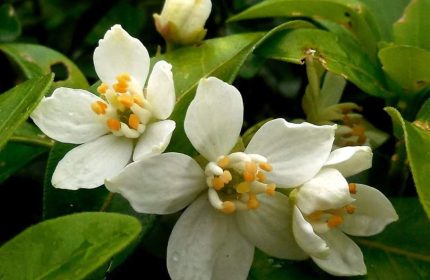More than two-fifths of butterflies face extinction – why we need them and 10 ways to help
Many of our beautiful native butterflies are under threat. Butterfly Conservation tells how we can all help them survive.
It’s lovely to see brightly-coloured butterflies fluttering around your garden – but it’s a sight that’s becoming increasingly rare, as experts say more than two-fifths of British butterflies are threatened with extinction.
The latest Red List for British butterflies shows many beautiful native species are under threat from a myriad of problems including climate change, nitrogen pollution and landscape change. Butterfly Conservation (butterfly-conservation.org) says 76% of butterflies have declined since 1976, and have warned that action is needed to help prevent species being lost forever.
View this post on Instagram
“The message is clear: sustained, targeted conservation efforts can reduce the extinction risk of threatened butterfly species,” stresses Dr Richard Fox, head of science at Butterfly Conservation. “With the extinction risk increasing for more species, much more must be done to protect our butterflies from the effects of changing land management and climate change. Without action it is likely that species will continue to be lost.”
He explains that butterflies are an important indicator species, so if you’re not seeing butterflies it’s a sign that our other wildlife is in crisis too. Just as importantly, butterflies play crucial roles in the food chain, as well as being pollinators of plants.
Here’s what Fox says you can do to help the UK’s 59 resident butterfly species survive…
1. Create a butterfly base in your garden

Dr Richard Fox
Butterflies will visit any garden, however small, if they can feed from nectar plants, and a well-planned garden can attract more than 20 species of butterfly. To attract butterflies, plant nectar plants in sunny, sheltered spots (as they like warmth) choose a variety of plants to attract different species, put the same types of plant together in blocks, and create a safe space for butterflies, moths and caterpillars to shelter by leaving a pile of logs in a quiet corner of the garden.
2. Plant for the seasons
Butterflies need flowers throughout the seasons; spring flowers are vital for butterflies coming out of hibernation, while autumn flowers help them build reserves for winter. Good plants for summer nectar for butterflies include buddleja shrubs (otherwise known as the butterfly bush), lavender, verbena bonariensis – which stands up to a metre tall – perennial wallflower, and marjoram herbs.
3. Plant carefully
Plant roses, shrubs or mid-sized perennials like buddleja in the centre of borders, and put taller plants like verbena bonariensis around the outside.
View this post on Instagram
4. Look after your garden well
Gardeners can help butterflies by prolonging plants’ flowering by deadheading their flowers, mulching with organic compost and regularly watering plants.
5. Don’t use insecticides and pesticides
Insecticides and pesticides kill butterflies, as well as other pollinating insects and ladybirds, ground beetles and spiders, so try to avoid using them.
6. Don’t buy peat compost
Peat bogs are home to many important animals and plants, including the endangered Large Heath butterfly, which is declining across Europe. Instead of using peat compost, there are good alternatives available at garden centres.
7. Let a patch of grass grow long
You don’t have to let your whole garden grow wild, but if you let at least a patch of grass grow long, it can help attract insects including butterflies – nettles are good!

An endangered Large Heath butterfly
8. Don’t forget caterpillars
Remember to add a variety of caterpillar foodplants to your garden, like native shrubs. Caterpillars need foodplants to survive, and butterflies will be attracted to your garden to lay their eggs. Another benefit is that the more caterpillars you have, the more birds you’re likely to attract to feed on them. Plant trees like holly, alder, buckthorn, and herbaceous plants like broom, ivy, nasturtium, and hop, and remember butterflies and caterpillars also like plants we don’t like, such as nettles and thistles.
9. Even a small pot will help
If you haven’t got a garden, you can still help save butterflies – even a small plant pot on a doorstep or balcony could help butterflies get from one area of habitat to the next.
10. Take part in the Big Butterfly Count
You can also help conservationists learn more about what’s happening to our butterflies by taking part in the Big Butterfly Count (bigbutterflycount.butterfly-conservation.org), the world’s largest butterfly survey, which runs from 15 July to 7 August. All you have to do is spend 15 minutes in a sunny spot and record the amount and type of butterflies you see.
The Press Association
Latest posts by The Press Association (see all)
- Barbara Taylor Bradford, the ‘grand dame of blockbusters’, dies aged 91 - November 25, 2024
- How to add scent to your natural Christmas decorations and wreaths - November 25, 2024
- Chocolate and ginger biscotti recipe - November 24, 2024
- 5 new books to read this week - November 23, 2024
- 3 easy Mary Berry recipes to make this season - November 22, 2024





















